Leverage the time between sessions in a remote Event Storming
Struggling to keep energy high in remote Event Storming? Discover how to turn breaks between sessions into your secret facilitation superpower.
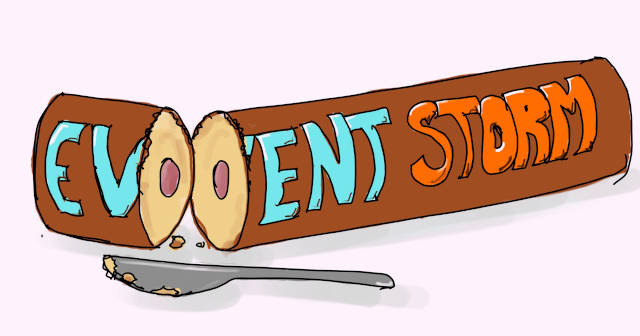
Asking people to remain focused during online meetings for hours is a new form of office cruelty! That’s why we chunk Event Storming into 90-minute sessions. Let’s see how to make the best out of this!
What’s the problem?
You mentioned that short sessions are an opportunity for improvement, but I don’t see how. At least when people are in the workshop room for 2 days, they are focused and dedicated!
The key is what happens between sessions! Below is how to ensure everyone leaves the sessions with clear “homework”. You’ll see that there is homework for participants, but also for you, the facilitator!
At the end of sessions
Review the problems, questions, and decision stickies
Participants create stickies highlighting problems, questions, and decisions during the workshop. Before people leave the room, go through these stickies together. For each, ask the group:
- Is it still relevant?
- Do we have an answer?
- Is there something we can do about it before the next session? For example, gather some information or talk to someone else.
- Who can do this?

Ask for a bit of feedback
The end of the session is a good opportunities to collect feedback. Yet, too much, too frequent, and too open feedback can jeopardize your facilitation! People new to Event Storming might raise their doubts about the workshop. If they have influence, it could fragilize your facilitator position. Remember, you are the expert facilitator, and participants are committed to trusting you!
So, aim for feedback you can apply right away. We usually ask about the remote experience. For example:
- What is one thing that I loved about the remote experience?
- What is one thing we could improve for the next session?
Between sessions
Tidying and publishing
Here are straightforward but high-value actions that you can do between sessions:
- Tidy up the board! Keeping the board tidy is one of the seven fundamental remote facilitation practices. The time between the sessions is perfect for this.
- Backup a snapshot of the board. Credits to Paul Rayner. It’s handy to have a workshop timeline in case you need to understand how a decision was made later.
- Write and share a summary of the session for participants. It’s beneficial for those who missed this session and for anyone to step back. Again, save a copy along the snapshot timeline for future reference.
- Finally, share the summary and board with a broader audience. This extended audience can contribute by commenting on the design board.
Adapt

This is the most significant benefit of running the workshop in short sessions. You get plenty of opportunities to reorient or adjust along the way. Adapting always starts with gathering information. Here are the different sources you have at your disposal:
- The workshop content. Are the scheduled activities suitable for what is emerging? Is there some knowledge that the participants lack?
- Your observations as a facilitator. Is the energy of the group decreasing? Is the workshop getting too complicated?
- The feedback you received
- A discussion with the sponsor. If you were “hired” by a specific person, regularly check with them to ensure the workshop meets their goal. It’s even more critical if the workshop seems to be drifting in a new direction.
📝 Be careful if you feel too much “office politics”! There is a risk that some stakeholders try to steer the workshop in some direction for their benefit. So, be clear about the workshop upfront and don’t oversell things. Explain that Event Storming will rely on collective intelligence and diversity of points of view to reach the best decisions. It’s also a good practice to clarify how decisions will be made to all participants up front. If you find yourself in this situation during the workshop, suggest: “This is not the scope of Event Storming. Let’s finish this workshop and organize another one to address your problem afterward.”
Then, use all this information to decide what you will change in the following sessions. Depending on all this input, you may switch to new activities or invite new participants. Don’t forget to prepare the board if needed.
Participants do their homework
Finally, participants can use the time between sessions to complete any TODO actions.
When you start the next session
Review pink “problem” stickies, the homework TODOs, and the latest decisions. This is a nice way for everyone to reconnect with the workshop.

📝 You can use this as an energizer. Ask participants to grab a hot beverage, create pairs in breakout rooms, and give them 5 minutes to explore the board. Eventually, bring everyone back and ask each group to share one insight or question.
Benefits
As a facilitator
- Get the opportunity to take a step back and adapt the workshop to focus on what matters the most
- You don’t need to prepare too much in advance. You can start with a skeleton of the workshop steps and only set up the first session.
- Your job becomes easier and more comfortable! You have plenty of time between sessions to step back and adapt. Nothing like the 10-minute coffee break rush of a co-located workshop.
For the participants and workshop outcome
- Short sessions are less tiring
- Short sessions are more compatible with people’s agendas. So, starting the workshop sooner with higher attendance is usually possible.
- With homework, the group should join the sessions better prepared. This means less waiting time during the workshop.
- The virtual tools let us tap into diversity by sharing the board with a broader audience.
- Finally, we get an “audit trail” almost for free!

Embrace remote
Don’t be afraid of remote Event Storming! Here is a bonus opportunity: use the above advice for co-located workshops. Splitting a co-located Event Storming into more sessions makes it better, too!
The following post will be about keeping people engaged in a remote session.
This blog post is part of the 1h Event Storming book that we are currently writing.
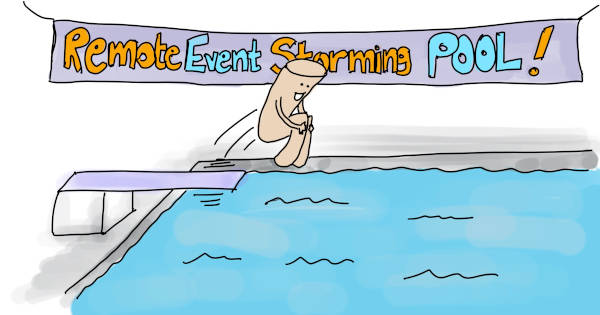
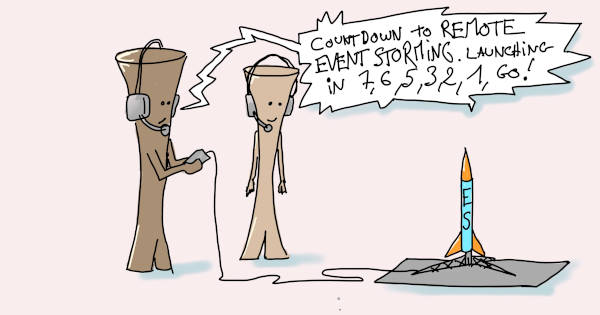
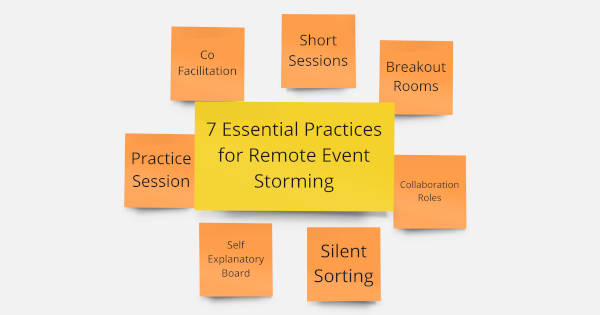
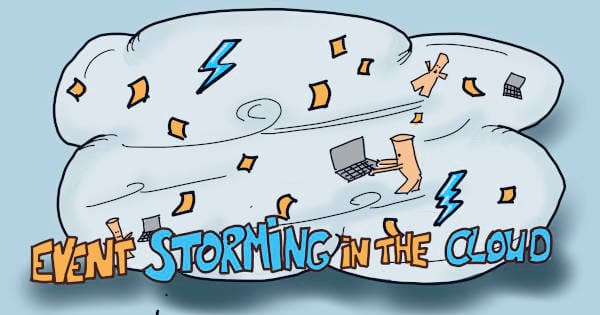
Leave a comment